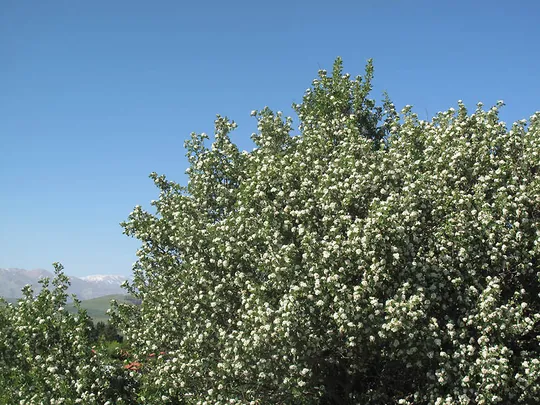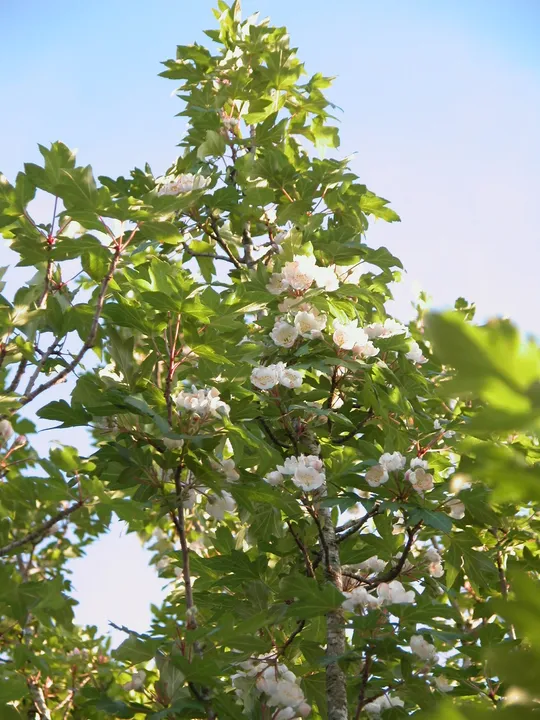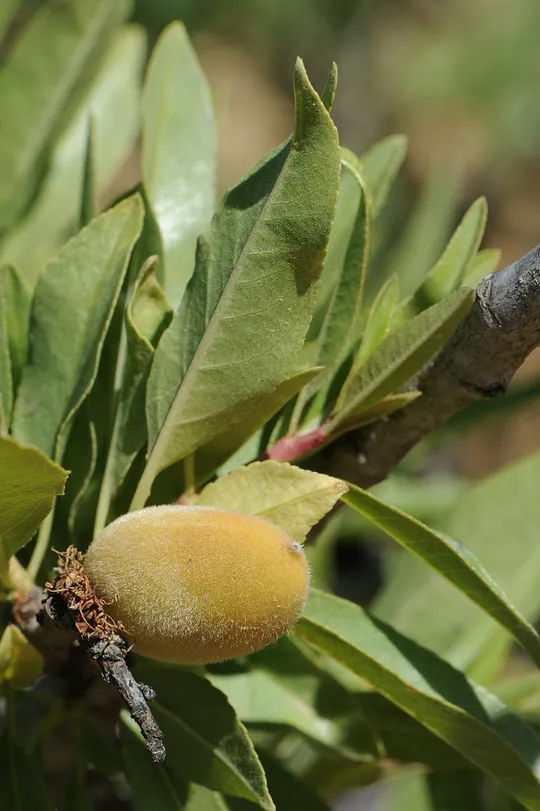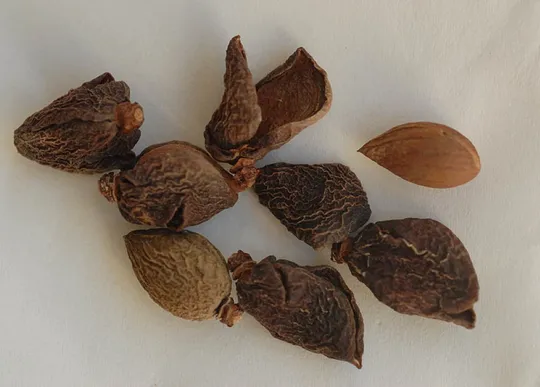Single-seeded Hawthorn, One-styled Hawthorn
Crataegus monogyna
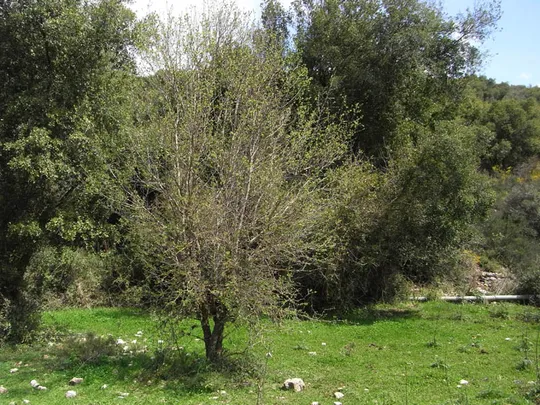
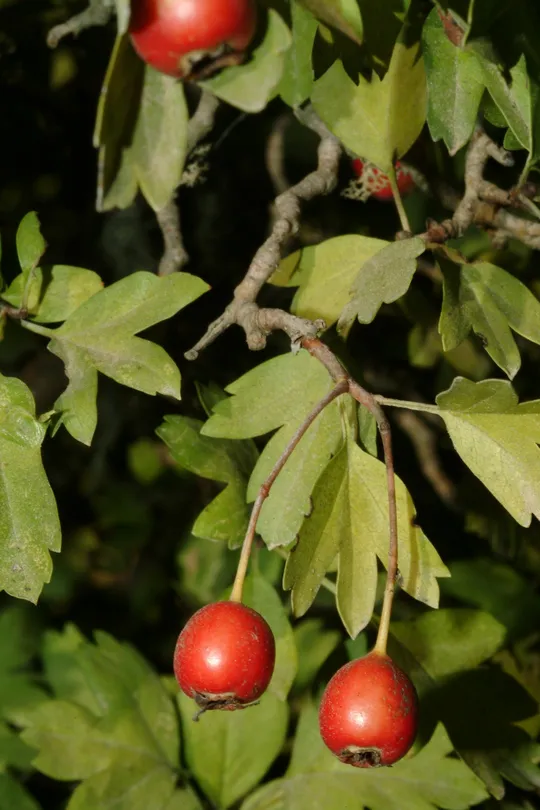
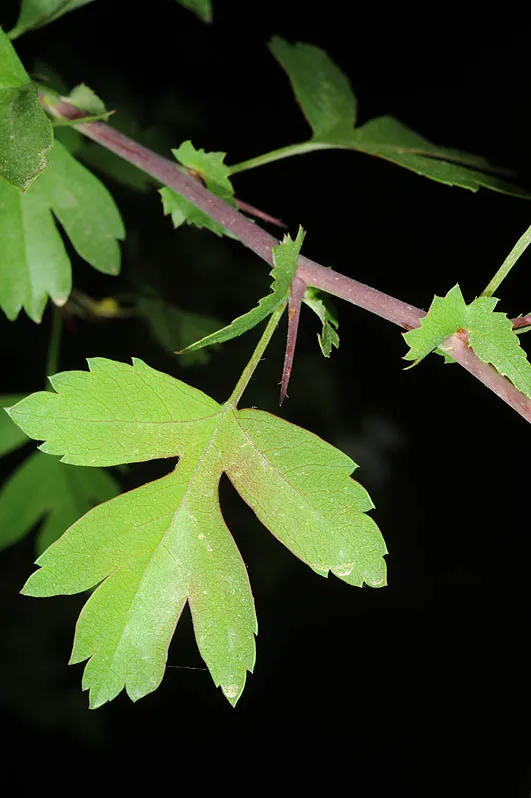
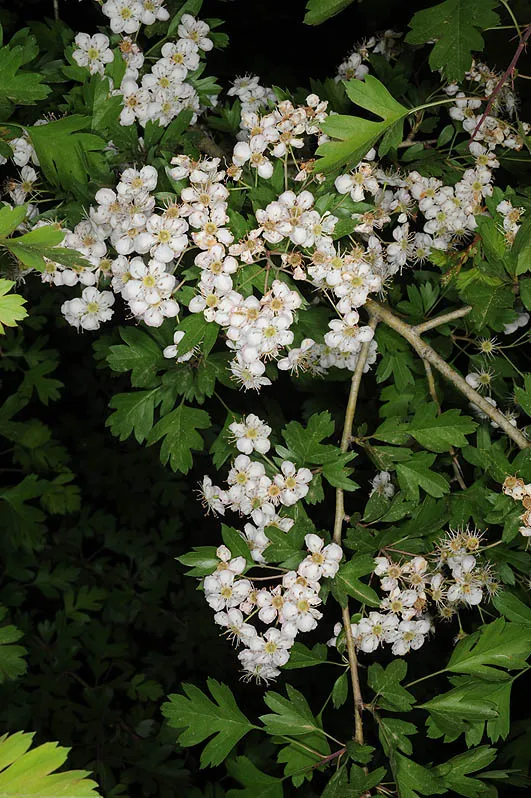
Crataegus monogyna
grows in the Upper Galilee and in the northern Golan Heights at the foot of
Mount Hermon, at 11 documented sites and there may be about 15 sites. In the
Upper Galilee, it is found at three adjacent sites in the Wadi Godrim and Sasa area. In the northern Golan Heights,
it is known from several sites in the Odem Forest area and its slopes toward Sa'ar
Stream and on the Bashanit Ridge. It is relatively common on the northern slopes
of the Sa'ar Stream. At the foot of Mount Hermon, it grows on overgrazed areas
in the vicinity of Nimrod Junction-Mount Keta-En Qiniye and in the Hazuri
Valley, at altitudes ranging from 900 to 1200 meters. A single specimen was
recently found on Mount Hermon near the lower cable car, at an altitude of 1600
m.
Crataegus monogyna
is associated with Quercus boissieri woodland in damp
and cool places at altitudes of 800-1100 meters. Grows in native woodland
clearings on limestone-rich terra rossa soil or deep or rocky basalt soil. In Israel,
it grows only in areas of moist native woodland, but in Europe, it is a hedge species
common in agricultural areas where the original forest was cut down.
The genus Crataegus numbers 186
species of winter-deciduous shrubs and low trees, with thorny branches. It is
known for its many apomictic
species (bearing fruit without pollination) and for the extensive hybridization
between its species, which makes it difficult to identify them. Species ranges extend
over temperate regions on both parts of the Northern Hemisphere. About 100-150
species grow in North America, about 10-15 species in Europe, about 20-30
species in Central Asia and about 5-10 species in the Himalayas and in Eastern
Asia. Many of the species are characteristic of disturbed habitats – fences,
glades and forest clearings and edges, where they usually appear as small trees
or shrubs.
·
Crataegus monogyna is limited to a small number of sites in two regions
and is apparently stable.
·
The number of plants in the Upper Galilee is 190
(according to the 1990 census), and in the Golan Heights the number is
estimated at 350.
·
Despite the fact that the trees are rather distant from human
settlements and only moderately accessible, their proximity to the Lebanese
border makes them vulnerable to road construction, fire and security-related
activities.
·
C. monogyna is protected by virtue of being a tree.
·
The species has a broad global distribution and is not
globally endangered.
A systematic
survey should be conducted in the Odem Forest area and at the foot of Mount
Hermon in addition to the survey conducted in the Upper Galilee, to learn its
distribution, habitat and the number of trees and their threat factors. Efforts
should be made to prevent uprooting due to security operations.
Crataegus monogyna is a widely distributed species that grows throughout
Europe, the Mediterranean countries and Central Asia, up to northwest India.
This is the most common Crataegus species in Europe where it is
characteristic of hedges, forest clearings and overgrazed areas. The Upper
Galilee and Jabal Druze in southern Syria are the southern distribution limits
of this northern species in the Middle East.
Crataegus monogyna is a deciduous tree that grows at a small number of
sites in very limited areas in the Upper Galilee and the Golan Heights, where
there is overgrazing and uncontrolled felling. It is threatened in Israel by
cutting and its small populations, particularly in the Upper Galilee.
דרור, א. 1984. עוזרר חד-גלעיני ועוזררים בני כלאיים בגליל. רתם 11: 26-59.
שמידע א. ולשנר, ה. 2010, צמחים במסע מים לים: בתוך ספר "מים לים" בהוצאת יד-בן צבי.
Current Occupancy Map
| 1000 squre meter pixel | 5000 squre meter pixel | 10000 squre meter pixel | |
|---|---|---|---|
| number of observations | 0 | 0 | 0 |
| in total pixels | 0 | 0 | 0 |
| Family | Rosaceae |
| Classification | On the near threatened species list |
| Ecosystem | Mediterranean |
| Chorotype | Eastern Mediterranean – Euro-Siberian (Western Irano-Turanian) |
| Conservation Site | The Big Juba, Mount Odem, Wadi Godrim |
| Rarity |
1
3
6
|
|---|---|
| Vulnerability |
0
0
4
|
| Attractiveness |
0
1
4
|
| Endemism |
0
0
4
|
| Red number |
1
2.6
10
|
| Peripherality | N |
| IUCN category | DD EW EX LC CR EN VU NT |
| Threat Definition according to the red book | Near threatened |
 Based on:
Based on:
